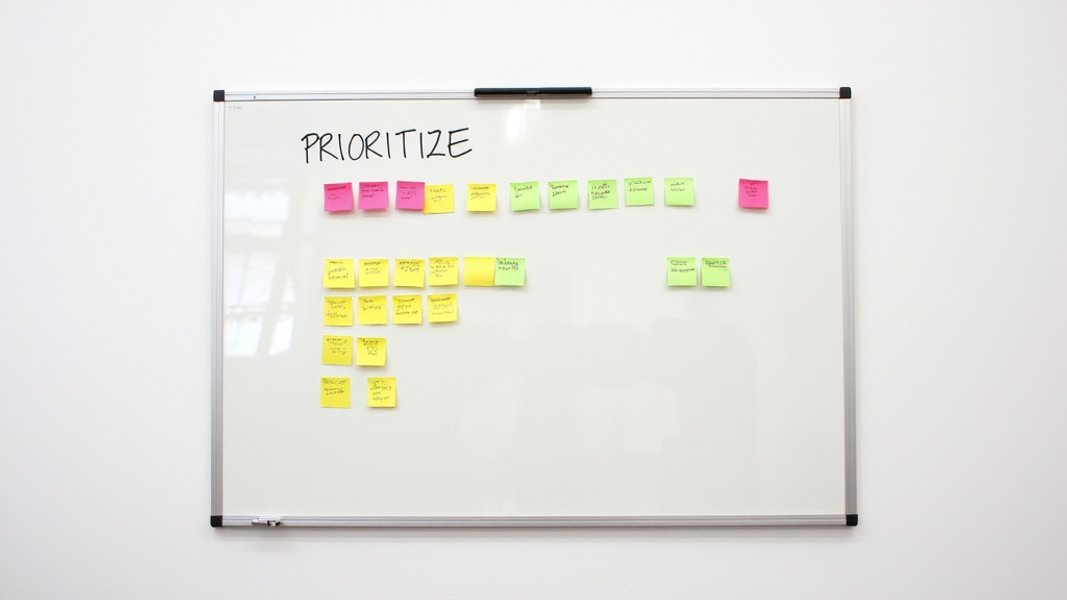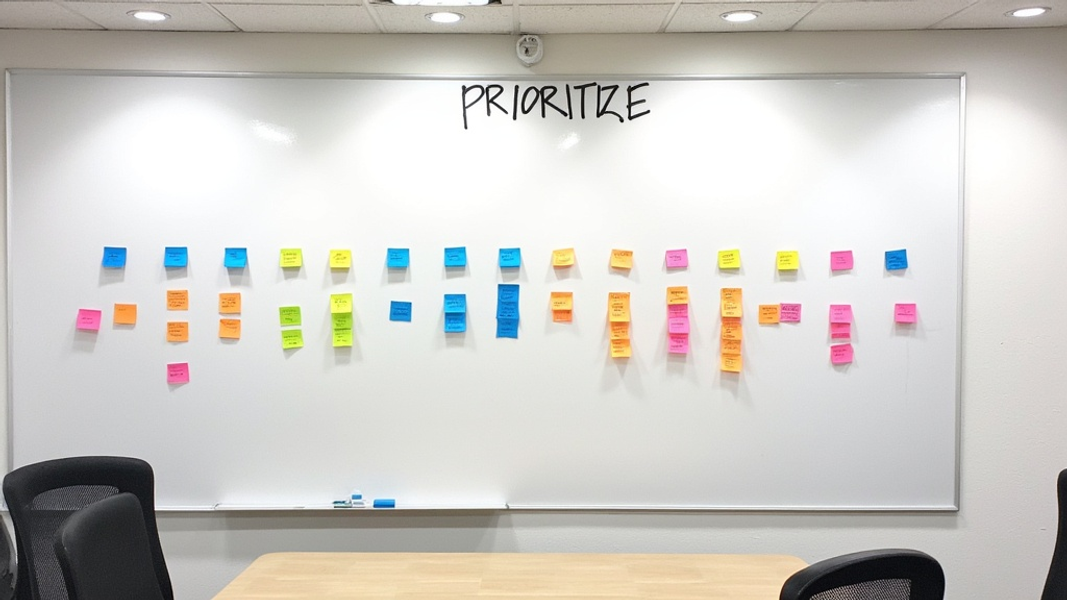
In a world where tech moves at lightning speed, taking too long to launch a product can spell disaster. That's where MVP development comes in. This guide will show you how to create a Minimum Viable Product that gets your idea out there fast, so you can start learning from real users right away.
What is an MVP?
MVP stands for Minimum Viable Product. It's the simplest version of your product that can still solve your users' main problem. The goal is to launch quickly and start learning from real people using your product.
Why MVPs Matter
MVPs help you test your idea without spending too much time or money. By focusing on the core features, you can see if people actually want what you're building. This approach lets you make changes based on real feedback, not just guesses.
Many people think an MVP has to be perfect or have lots of features. That's not true. An MVP should be just good enough to solve the main problem and get useful feedback. It's about learning, not perfection.
The MVP Development Process
Creating an MVP involves several key steps. Let's break them down:
1. Idea Validation
Before you start building, you need to make sure your idea is worth pursuing. This means doing your homework:
Market research helps you understand who might use your product and why. Look at trends, talk to potential customers, and see what problems people are facing.
Competitor analysis shows you what's already out there. Look at similar products and think about how yours can be different or better.
Your unique value proposition is what sets you apart. It's the main reason why someone would choose your product over others. Make sure you can explain this clearly in one sentence.
2. Feature Prioritization
Now that you know your idea has potential, it's time to decide what to build first:
Start by listing all the features you think your product needs. Then, use a method like MoSCoW (Must have, Should have, Could have, Won't have) to sort them. Focus on the "Must have" features for your MVP.
Create a feature roadmap to plan what you'll build now and what can wait for later versions. This helps you stay focused and avoid getting sidetracked by nice-to-have features.
3. Prototyping
Before writing any code, it's smart to create a prototype:
Low-fidelity prototypes are quick sketches or wireframes. They're great for testing basic ideas and layouts.
High-fidelity prototypes look more like the final product. They're useful for testing specific interactions and designs.
Tools like Figma or Adobe XD can help you create prototypes quickly.
Once you have a prototype, show it to potential users. Watch how they interact with it and listen to their feedback. This can save you a lot of time and effort later.
4. Development
With your prototype tested and refined, it's time to start building:
Choose a tech stack that fits your needs. Consider factors like scalability, ease of use, and your team's skills.
Agile development methods like Scrum or Kanban can help you work efficiently. These approaches let you build in small chunks and adapt quickly.
Don't forget about quality assurance. Test your MVP thoroughly to catch bugs and ensure a smooth user experience.
5. Launch and Iteration
Launching your MVP is just the beginning:
Consider a soft launch to a small group of users first. This lets you iron out any last-minute issues before a wider release.
Set up ways to gather user feedback. This could be through in-app surveys, user interviews, or analytics tools.
Use the feedback you get to make your product better. Keep improving and adding features based on what your users actually need and want.

MVP Development Best Practices
To make your MVP development process smooth and effective, keep these best practices in mind:
Focus on solving one core problem really well. It's better to do one thing great than many things poorly.
Keep your design and functionality simple. Fancy features can wait. What matters is that your core solution works well.
Set clear goals for your MVP. How will you know if it's successful? Define metrics like user signups, daily active users, or customer feedback scores.
Build a strong relationship with your early users. Their feedback is gold. Make it easy for them to share their thoughts and show them you're listening by acting on their input.
Common Pitfalls in MVP Development
Watch out for these common mistakes:
Feature creep happens when you keep adding "just one more thing" to your MVP. Stick to your core features and save the rest for later versions.
Perfectionism can slow you down. Remember, your MVP doesn't need to be perfect. It needs to be good enough to test your idea.
Ignoring user feedback is a big no-no. If users are telling you something isn't working, listen to them. They're the ones who will make or break your product.
Choosing the wrong development approach can waste time and money. Make sure you're using methods that fit your team and project needs.
MVP Success Stories
Let's look at some real-world examples of successful MVPs:
Dropbox
Dropbox started with a simple video showing how their file-sharing service would work. They didn't even have a working product yet! This video helped them gauge interest and get early signups.
What made it work:
- They solved a common problem (syncing files across devices)
- The video clearly showed how the product would work
- They used a waitlist to build excitement
Airbnb
Airbnb began as a basic website where the founders rented out air mattresses in their apartment during a busy conference. They didn't try to build a global hospitality platform right away.
Keys to success:
- They started small and focused on a specific event
- They learned directly from their first guests
- They gradually expanded based on what worked
Zappos
Zappos tested the online shoe market with a very basic website. At first, they didn't even have their own inventory. They would buy shoes from local stores when they got an order.
What they did right:
- They validated the demand for online shoe shopping
- They built relationships with suppliers before scaling up
- They focused on customer service from the start
Choosing the Right MVP Development Partner
If you're not a tech expert, you might need help building your MVP. Here's what to consider when choosing a development partner:
Look for a team with experience in MVP development. They should understand the lean startup approach and be able to work quickly.
Consider whether you want to build in-house or outsource. In-house gives you more control but can be expensive. Outsourcing can be more cost-effective but requires good communication.
When evaluating potential partners, ask about their process, look at their past work, and check references. Make sure they understand your vision and can work within your budget and timeline.
Case Study: TechStartup X partnered with DevShop Y to build their MVP. DevShop Y's agile approach and experience with similar products helped TechStartup X launch in just 8 weeks, leading to 10,000 signups in the first month.

Future-proofing Your MVP
While your MVP should be simple, it's smart to think about the future:
Build with scalability in mind. Choose technologies and architectures that can grow with your product.
Plan for future features, even if you're not building them yet. This might mean setting up your database in a way that makes adding new features easier later.
Keep your tech stack flexible. Avoid locking yourself into tools or platforms that might limit you in the future.
Consider using services like FastWaitlist to gauge interest in new features or products. This can help you validate ideas before investing in development.
FAQs
What's the difference between an MVP and a prototype?
A prototype is a model or simulation of your product idea. It's used to test concepts and designs. An MVP is a working product with basic features that you can release to users. While a prototype helps you refine your idea, an MVP lets you test it in the real world.
How long should it take to develop an MVP?
The time to develop an MVP varies based on complexity, but typically ranges from 2 to 4 months. The key is to move quickly while ensuring your core features work well. Remember, the goal is to launch and start learning, not to build a perfect product.
Can I skip the MVP and go straight to a full product?
While you can, it's often risky. MVPs help you validate your idea with real users before investing too much time and money. Without an MVP, you might build a full product that no one wants. The MVP process helps you learn and adjust your product based on actual user needs.
How much does it cost to develop an MVP?
MVP costs can vary widely, from $20,000 to $150,000 or more, depending on complexity and features. Focus on building only what's necessary to test your core idea. This approach keeps costs down and lets you validate your concept before major investments.
What if my MVP fails?
If your MVP doesn't succeed, that's valuable information. It means you've learned something important about your market or idea without spending too much. Use this feedback to pivot your idea or try a different approach. Many successful products evolved from initial MVPs that didn't work out as planned.
Conclusion
Building an MVP is about starting smart and growing based on real-world feedback. By focusing on core features, launching quickly, and learning from your users, you set yourself up for success. Remember, some of today's biggest tech companies started as simple MVPs. Your idea could be next.
Ready to start your MVP journey? Begin by clearly defining your core problem and unique solution. Then, sketch out your main features and start planning your development process. The sooner you get your MVP out there, the sooner you can start building something people truly want and need.
